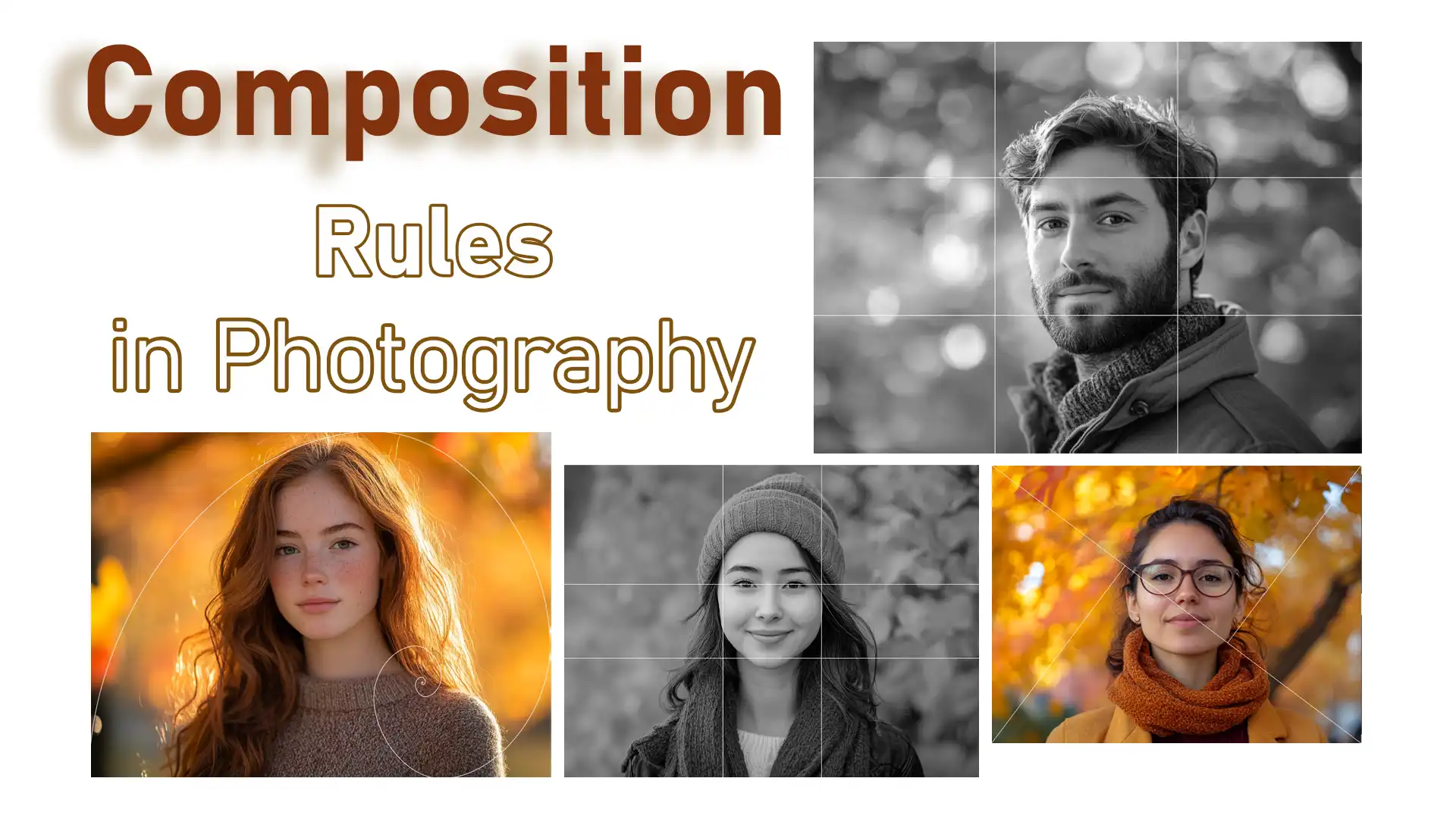
When it comes to capturing stunning images, understanding composition rules in photography is crucial.
Have you ever looked at a photograph and felt drawn to it, without quite knowing why? That’s the magic of composition.
I’m here to guide you through the essentials that can transform your photography from ordinary to extraordinary.
I’ll share insights on how to frame your shots, balance elements, and use techniques that keep viewers engaged. Imagine finally being able to capture the world as you see it, evoking emotions and telling stories through your lens.
Ready to enhance your photographic journey?
Let’s dive deeper into the art of composition and unlock the secrets behind captivating imagery.
Table of Contents
Understanding Composition Rules in Photography
The Importance of Composition in Photography
Photography isn’t just about clicking the shutter. It’s about telling stories through your lens. This is why you need to understand what photo composition is.
Composition rules in photography serve as guides to make your images more visually appealing and narrative-driven.

How Composition Enhances Storytelling
One of the primary composition rules is the rule of thirds. This technique suggests dividing your frame into nine equal parts using two equally spaced horizontal and vertical lines.
Placement of the main subject along these lines or their intersections can enhance the storytelling aspect of your photo composition.
Another effective technique is using leading lines. These lines guide the viewer’s eye through the photograph, drawing attention to a particular focal point.
Incorporating negative space effectively creates balance in photography composition. Allowing little or no space around your main subject gives room for the viewer’s imagination to roam freely in the captured scene.
Pro tip: For those looking to refine their skills further, exploring Lightroom Training can offer valuable insights into enhancing your compositions digitally.
Additionally, understanding the difference between Photoshop and Lightroom can help you choose the right tool for post-processing your images.
Key Photography Composition Rules
Let’s dive into the photography composition rules. They help create images that grab our senses and don’t let go.
These simple techniques can elevate what was once a snapshot to a story.
Pro Tip: Check out this beginner’s guide to further your understanding!
Rule of Thirds
When we talk about the rule of thirds, it’s like slicing a cake. Divide your image into a 3×3 grid. Place the central subject along these lines or at intersections.
This technique creates an interesting composition and naturally leads the eye. It’s often the first photo composition rule you’ll learn.
Ask yourself: does it balance the visual elements well?

Leading Lines
Leading lines are like guiding arrows in your capture.
Think of roads, rivers, or fences. They guide the viewer’s attention through the image to a focal point.
Use these lines to keep someone looking at your shot for longer, and cleverly enhance photography composition.

Symmetry and Patterns
Humans love symmetry. Just look around; our brains crave order.
Capture reflections, repeating patterns, and symmetrical scenes. They bring harmony in photographs.
Symmetry is an anchor in the chaotic world of photography.
It’s about finding order in chaos, and it gives your images a sense of peace.
Framing Your Subject
Natural frames surround us. Windows, branches, doorways are all tools. They guide the viewer to the heart of your message. Use framing to highlight the subject, creating depth and focus. Framing also separates the subject from its background, adding context without confusion.
In conclusion, these composition tips streamline your use of photographic composition and sharpen your imagery skills. Don’t forget that visual arts thrive on thoughtful arrangement.
For those interested in enhancing their skills further, consider exploring the difference between Photoshop and Lightroom to understand which tool best suits your editing needs.
Pro Tip: Learn how to crop in Photoshop to practice even more with the rule of thirds. It’s never too late to fine-tune the balance. Learning how to use the frame tool in Photoshop can also be beneficial.
Additionally, learning some Lightroom shortcuts and Photoshop shortcuts can significantly speed up your editing process and improve efficiency.
Advanced Photography Composition Techniques
Now, let’s dig deeper into a few advanced techniques.
Golden Ratio in Photography
The golden ratio is a little like nature’s secret code for beauty. Human beings have been using it for ages, from buildings to paintings.
In photography, it involves placing elements in a way that pleases the viewer’s attention naturally. It’s not magic; it’s mathematics – trust me, it can make your photos pop.
Start by finding that invisible spiral or curve line that your eye just loves to follow.
Pro Tip: Learn how to draw a curved line in Photoshop to expand upon your skillset.

Using Negative Space
Negative space is not about negativity but about letting your subject breathe. Think of it as providing room around the main object, enhancing focus.
When used right, it pulls the viewer’s attention straight to where you want it. Sometimes, less is more.
Experiment with simplicity and watch your images come alive in an attractive composition.
Balancing Elements
Balancing elements in your photograph involves finding harmony among colors, shapes, and patterns.
Imagine a see-saw on a playground; if one end is too heavy, it tips over. In images, visual weight can make or break a picture.
Properly placing subjects and giving equal importance across the frame maintains balance and keeps your viewer engaged throughout the scene.
- Play around with leading lines, such as pathways or rivers. They subtly steer a person's attention toward your focal point.
- Effective lines can guide the eye through the intricate layers of foreground, middle ground, and background, adding depth and creating a compelling story.
Additionally, learning how to adjust white balance in photography can help you achieve the perfect color temperature, ensuring your compositions are as visually pleasing as possible.
Breaking the Rules: When and Why
So, you’ve got your camera in hand and a basic understanding of the rule of thirds, composition, and all that jazz.
But here’s the thing: rules are meant to be broken, right? Maybe sometimes.
When you know why and when to break them, your creativity finally takes a stroll down the lane of artistic freedom.
Creative Freedom in Photography
Rules in photography exist as guides, a sort of map, pointing you where to go. But sometimes, we all want to take the scenic route.
Embrace creative freedom in your photography:
- Experiment with abrupt lighting changes or shift focus in unconventional ways.
- Play around with empty space until it feels right to you.
There’s something incredibly freeing about taking a shot without constraints.
Creative choices often result in visually interesting images with compelling storytelling elements.
So, don’t shy away from letting your creativity fly free!
Pro Tip: Learn different techniques to use in both Photoshop and Lightroom to expand upon your skillset even further!

Finding Your Unique Style
Everyone’s style is like a fingerprint; unique and one-of-a-kind. Finding your unique photography style isn’t easy, but once you embrace individual quirks, the magic starts.
Whether you’re drawn to vibrant colors or prefer minimalist shots with balanced elements, explore different techniques to see what resonates.
By testing different methods, be it wild angles, weird lenses, or whimsical subjects, you’ll stumble upon your style.
With tools like the patch tool in Photoshop, you can refine your images to match your vision.
Embracing personal style while understanding and judiciously breaking rules makes you stand out in a world full of photographers. A visual signature leaves a lasting impression.
Pro Tip: Check out these tips for Lightroom editing for an even better skillset!
Practical Tips for Mastering Photo Composition
Understanding photo composition is key to capturing captivating images. It’s like arranging a puzzle where each piece fits in its place.
When you find balance in these elements, your photos stand out.
Exercises to Improve Composition Skills
Enhancing composition skills requires regular practice. You don’t need tropical locations; everyday environments offer excellent opportunities:
- Photograph everyday objects from different angles to explore different types of photography.
- Notice how changing perspective alters the overall composition, and experiment with depth of field to add layers to your images.

Tools and Resources for Photographers
- Online Tutorials: Platforms like YouTube provide free lessons covering various composition techniques.
- Photography Books: Books often have chapters dedicated to composition, offering insights and visual examples.
- Photo Editing Software: Lightroom and Photoshop allow you to adjust composition aspects post-capture. Utilize Lightroom shortcuts to streamline your editing process.
Commit to practicing with these resources regularly. Like any skill, photography improves with persistent effort.
Common Mistakes to Avoid
Even seasoned photographers fall into traps. Here are some common mistakes:
- Overcrowding an Image: Too many subjects can confuse the viewer.
- Poor Alignment: Pictures tilted unintentionally lead to a disharmonious feel.
- Center Placement: Avoid placing subjects dead-center unless it's for specific intents, like portraits.
Asymmetrical compositions often appear more dynamic and intriguing. Lastly, never underestimate the power of simplicity. Sometimes less is more. Let your main subject have room to breathe in the frame.
Pro Tip: Use the rule-of-thirds grid while shooting or editing. This helps ensure composition balance, making images visually pleasing and balanced without overwhelming the audience.
Frequently Asked Questions (FAQs)

What are the 7 composition rules?
The 7 composition rules are:
- Rule of Thirds: Divide your image using 2 vertical and 2 horizontal lines, then place the main elements along these lines or at their intersections.
- Leading Lines: Use natural lines to lead the eye into the picture.
- Diagonal Lines: These lines create movement and excitement.
- Framing: Use natural or artificial frames to enclose the subject.
- Figure to Ground: Ensure a good contrast between the subject and the background to draw focus.
- Fill the Frame: Get close to your subjects to make them the main focus.
- Center Dominant Eye: Place the dominant eye of the subject in the center of the photo to give the impression they are looking at you.
What are the 12 rules of composition in photography?
- Rule of Thirds
- Leading Lines
- Diagonal Lines
- Framing
- Figure to Ground
- Fill the Frame
- Center Dominant Eye
- Patterns and Repetition: Patterns are aesthetically pleasing, but the best is when the pattern is interrupted.
- Symmetry and Balance: Symmetrical shots can be visually pleasing and perceived as harmonious.
- Color Theory: Use colors effectively to create a mood or tone.
- Texture: Incorporating texture can enhance the tactile quality of a photograph.
- Depth: Add depth to your photos by including elements in the foreground, middle ground, and background.
What are the 11 rules of composition?
The 11 rules of composition are:
- Rule of Thirds
- Leading Lines
- Diagonal Lines
- Framing
- Figure to Ground
- Fill the Frame
- Center Dominant Eye
- Patterns and Repetition
- Symmetry and Balance
- Color Theory
- Texture
What are the 10 main compositional techniques?
- Rule of Thirds: Helps to balance your photo and draw the viewer’s eye.
- Leading Lines: Guide the viewer's eye through the photograph.
- Diagonal Lines: Create a sense of action.
- Framing: Use elements within the scene to frame the subject.
- Figure to Ground: Distinguish the subject clearly from the background.
- Fill the Frame: Closer shots that capture detail.
- Center Dominant Eye: Helps to make portraits engaging.
- Patterns and Repetition: Patterns can make a simple photo more interesting.
- Symmetry and Balance: Creates a harmonious feel.
- Depth: Layer different elements to give a sense of space.

Conclusion
Mastering composition rules in photography has transformed my approach to capturing images.
The rule of thirds, in particular, had a significant impact on my work. Positioning my subject off-center for the first time added depth and intrigue, turning ordinary snapshots into compelling stories.
For anyone looking to enhance their skills, I highly recommend structured learning paths like Photoshop course and Lightroom course. These resources provide valuable insights into composition and various techniques, leading to noticeable improvements in your photography.
Understanding composition is essential, and it has been a rewarding journey for me.
Happy editing!
Read more about Photoshop:















